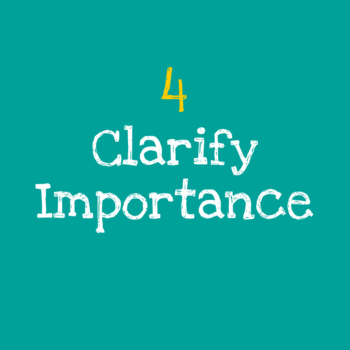How many of us look forward to a difficult conversation?

Difficult because the conversation is with someone close - a colleague, friend or even relative.
Difficult because the subject may be one we prefer not to have to address.
Difficult because we are concerned what the outcome might be - opinions may differ, emotions may run strong.
Dale Carnegie put it well saying that “when dealing with people, remember you are not dealing with creatures of logic but creatures of emotion.” It’s hard not to get emotionally involved when you’re in a tense conversation. Quite often it is the emotional reaction that we fear.
In many ways that’s what a difficult conversation is, and people are normally reluctant to start a challenging conversation out of fear of the consequences.
However, there comes a point when the issue that needs to be discussed cannot be put off any longer. We know that we need to have that difficult conversation. Very few of us look forward to it and even less know how to have that challenging conversation.
When dealing with people, remember you are not dealing with creatures of logic but creatures of emotion.
Dale Carnegie

Having difficult conversations is an opportunity to build trust and respect. If the conversation is done well and we are fair in giving the other party the opportunity to state their position and listen to them with an open mind, then we can build trust.
If we create the environment where we can challenge each other without fear, relationships with other people improve greatly. You will be recognised as someone who is willing to address tough issues and your reputation will be enhanced.
How to have a difficult conversation?
Where do we start? I want to introduce you to Susan Scott’s 7 step model for having a difficult conversation. The model is taken from her book Fierce Conversations “Achieving Success at Work and in Life One Conversation at a Time” which I would highly recommend.
The focus of the book is on helping us change how we talk to each other. Specifically, it is to help us stop avoiding tough conversations and start constructively saying what we really think about a situation, stand up for what we need or what we think should happen.
If you’ve ever felt the need to have an important conversation, but couldn’t bring yourself to it, this model may help.
When preparing for a difficult conversation, the most difficult part is knowing how to start. How many times have you started to have a difficult conversation but were unprepared, were vague about the purpose of the conversation, or got interrupted by the other party and the conversation went in a totally different direction?
The opening 60 seconds is critical to setting the scene and it is important to explain the “Rules of Engagement” before a difficult conversation starts.
You must ask for opportunity to speak uninterrupted and state that the other person will have their chance to speak as soon as you are finished. Creating that space will allow you to move to the next stage, using the 7-step model to clearly state the purpose of the conversation.

Step 1: Name the issue
Be clear and concise regarding why you are having this conversation.
Let us demonstrate how the model works by way of an example. The issue is poor timekeeping from one of your team. They have been showing up late to the office, it is not their normal behaviour, and they have not offered you an explanation. You have let it pass but you know others in the team have noticed it.
In your opening statement to the individual be clear “the issue I want to discuss is your recent time keeping.”

Step 2: Give specific examples that illustrate the behaviour or situation you want to change.
Examples are important, so be sure to think of an example that best supports your issue. It makes it less emotional if you are dealing in facts. “Specifically, last Tuesday you came into the office at 10.30am and on Thursday it was 10am and you didn’t offer an explanation.”

Step 3: Describe your emotions about the issue
You may be concerned, curious or unhappy but not judgemental. You have yet to hear all of the facts. “I am unhappy that you are late and haven’t offered an explanation. I am also a bit curious. This is not your usual form, and I am wondering in case there is something up.”

Step 4: Clarify why this is important
What is at stake for you, the customer, the team, the organisation, or the family.
“You know I put a lot of emphasis on everyone being punctual, we have a lot of client calls early in the morning and it also sets a good example of standards particularly for the new team members.”

Step 5: Identify your contribution
State your purpose in raising the issue. “I want to raise it to make you aware of the issue”

Step 6: Indicate your wish to resolve the issue
Be sure to use the term “resolve.” It is positive and demonstrates that you want to find a resolution and move forward.
“I want to understand if there is a problem and to have it resolved.”

Step 7: Invite the other party to respond
But I first, I want to hear from you….
The first 7 steps should take no more than a minute to run through. Always begin by asking the other person for opportunity to speak uninterrupted and state that the other person will have their chance to speak as soon as you are finished. Once you have finished your 60 seconds. Invite the other party to respond and simply listen to them even when you disagree with what they are saying.
Asking questions is priority at this point. Use paraphrasing and perception check. "Let me make sure I understand."
Dig for full understanding: don't be satisfied on the surface. “Please say more about this” or “I see it quite differently, so I’d like to understand your thinking” Make sure the other party knows that you fully understand and acknowledge their position and interests.
Resolution and next steps
State where we are now and what has been learned about the issue and how we can resolve matters. Check if anything has been left unsaid. Once you have a solution you both agree on, the next thing to do is develop an action plan. This is simply confirming who is going to do what, and when it will be done and the follow up to ensure commitments are being followed through.

An essential communication skill
Knowing how to raise difficult issues, addressing them in a factual way and creating an environment where the other party fells they have been dealt with in a fair way, is an essential communication skill.
With an understanding of how to facilitate that conversation and the confidence to put it into practice, we too can be recognised as someone who is prepared to address difficult issues. You will earn the respect of those around you.

